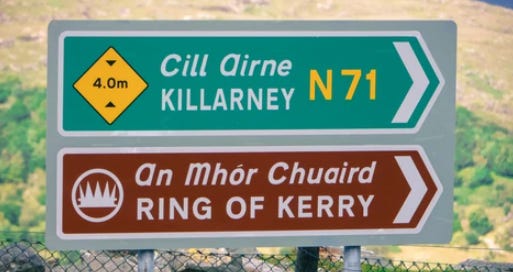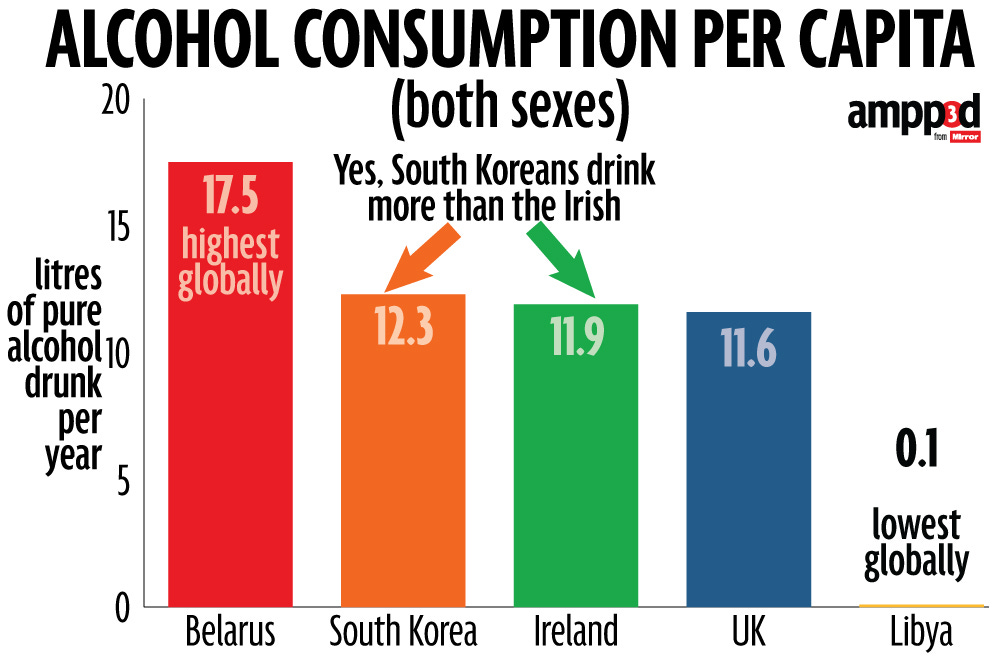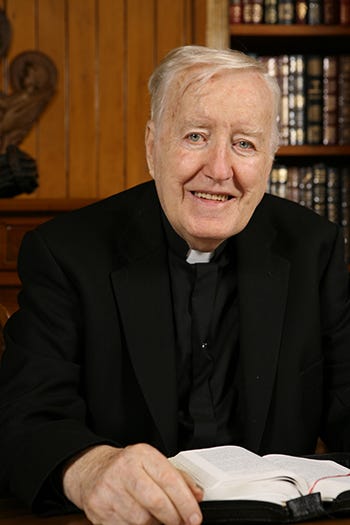When I first heard about this 35 years ago in college, I think it was more of the derogatory kind that had something to do with drinking. I didn’t care much for it back then, but I think the story has taken a different turn since.
For starters, 1). they’re just about the same size and 2). the coastlines of the two countries, especially the western and the southern, are uncanny. The following map of South Korea superimposed on Ireland is on 1:1 scale.
3). Both countries are divided, although circumstances obviously are a little different.
I wanted, for reference, to get the most generic and unoriginal answers for the question of “What do Ireland and South Korea have in common?”, so I turned to Google AI and ChatGPT. They did not disappoint. Both gave me stuff like, “they both believe in democracy and human rights.” Yeah, so do a million other countries. This does NOT count as number 4.
But here’s a thing, though, about the two nations that is intriguing. 4). Both have a long history of a neighboring island country to the east that has colonized and usurped them. Geographical coincidence, yes, but this is a very important point in both Ireland’s and South Korea’s national identities developing into what they are today.
One of the things that is a sure-fire thing to enrage Korean people (and thereby other Asians as well) is to say something to the effect of “aren’t all Asian people the same?” As insensitive as this remark is, we used to hear this all the time. Keyword, “used to.” It doesn’t happen as frequently these days—again, being exposed to other cultures and learning about them is a good thing.
Let’s turn this around. I’m willing to bet that most Asian people think that the Irish and the British are of the same ethnic background—and not know the difference between the Celtic (Gaelic) and the Germanic heritage. Both being misunderstood ethnically? That’s a weak link, but I’ll make that number 5.
Google AI and ChatGPT also returned that both Ireland and South Korea achieved a noticeable economic development in the past few decades. While the statement is indisputable, it came without providing the proper context. So here it is.
6). The Republic of Ireland became its own independent state in 1949 after a long battle both within and without, whereas the Republic of Korea, as we know it as South Korea, one year earlier in 1948 after its own series of battles.
South Korea and Ireland were at the very back of the line in the international stage with respect to economic power and being able to provide for its people during the 1950s. Ireland one of the poorest and South Korea second poorest in the world in 1953 as measured by GDP per capita. 7). It is against this backdrop both the Irish and the South Korean economic rise are considered especially noteworthy.
Probably because of their history of being invaded by foreign adversaries, 8). they’ve both become fiercest independence fighters and proud flag bearers. Identifying him/herself with their nationality is supremely important—ever notice they’ll almost go out of their way to let people know that they’re Irish or Korean?
9). Neither Koreans nor the Irish are well-known for their abstinence from alcoholic beverage. I would say both drinking cultures are mostly jovial but at times can get rowdy. But to be clear, before the eventual alcohol-induced dive into stupor, you can have a lot of fun drinking with either of them, even as strangers. I can’t speak for the Irish but Korean culture tends to be very liberal and lenient toward alcohol consumption. Seriously, can you imagine an Irish person without a pint of Guiness and a Korean without a shot glass for soju?
Speaking of which. This is a bit of a personal observation, but 10).
Irish pub synonymous with Guiness + (deep fried) Fish and Chips
Korean hof1 synonymous with beer + (deep fried) Chicken
And as the Irish Ambassador to South Korea Michelle Winthrop points out, 11). there were seminal points in each country, in athletics of all things, that marked upward momentum for both societies—the 1988 summer Olympics in Seoul and the Irish soccer football team qualifying for the first time in history (in 1989) for the 1990 FIFA World Cup. Oh the parallels!
Amb. Winthrop also talks about how 12). both peoples are superstitious. You don’t say! Four-leaf clovers, banshees, leprechauns on one side… More than a million fortunetellers, all sorts of local demi-gods, indigenous shaman practices on the other…
On a more serious note, Amb. Winthrop also brings up 13). the role literature and folk music played in both countries’ independence movement. I’m completely ignorant about the Irish independence literature but it is absolutely true that Korean writers and music played a huge part in the national psyche for the independence efforts.
14). The existence of dolmens. In Korean, it’s called 고인돌 (goh-in-dol). South Korea alone has about 30,000 of these ancient burial sites while Ireland has older, but fewer of these stone structures.
In Jejudo, there is a well-known livestock farm called 성이시돌목장.
목장 = farm
성 = Saint
이시돌 = Koreanized name for “Isidore.” (because there are so many Koreans with the last name “이” some people think it’s a Korean person named 시돌)
St. Isidore Farm. An Irish Catholic priest named Patrick James McGlinchey (hard to imagine a more Irish name) came to Jeju in 1954 and helped the locals cultivate a farm and taught them how to raise livestock for income. Fr. McGlinchey spent the rest of his life at the farm in Jeju, became one of only four “honorary” Korean citizens designated by the Korean government, and passed away at a Jeju hospital at the age of 89. His Korean name is 임피제 (Im Pih-jeh).
The Korean national anthem is called 애국가 (ae-guhk-ga, “Song of Patriotism”) composed by Ahn Ik-tae (안익태) in 1936. Ahn, who studied at the University of Cincinnati, Curtis Institute of Music, and Temple University, during the 1930s! was a cellist and a composer. There is some controversy surrounding the Korean national anthem because Ahn was later found to be a Japanese imperialists and even a Nazi sympathizer (disputed). It is a thorny issue, to be sure.
Anyhow, after his schooling in the United States, he was hired as the conductor of an orchestra in of all places—you guessed it—Dublin. That was when, in 1938, the Korean national anthem was performed for the very first time… in Dublin!
More closely related than you might have imagined before you started reading this, right?
mistranslated German word that denotes Korean beer halls called 호프 (hof) after HofBrau.















That's fantastic - I'm Irish and I'm a big Korea fan, having visited last October. Another thing found only in Ireland (well, okay, there's a tiny bit in western Scotland) and South Korea (specifically, on southern Jeju-do) are black basalt columns that rise from the sea at the coast. In Ireland, they're better known as the Giant's Causeway.